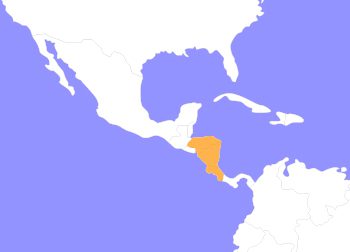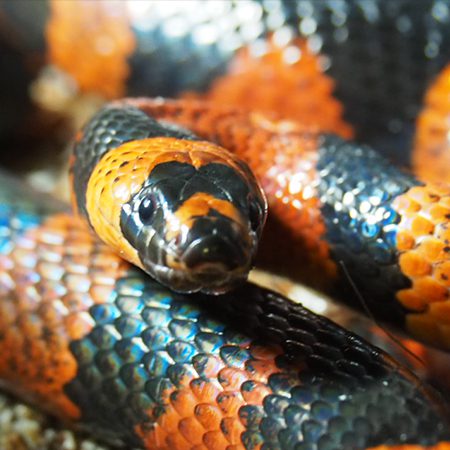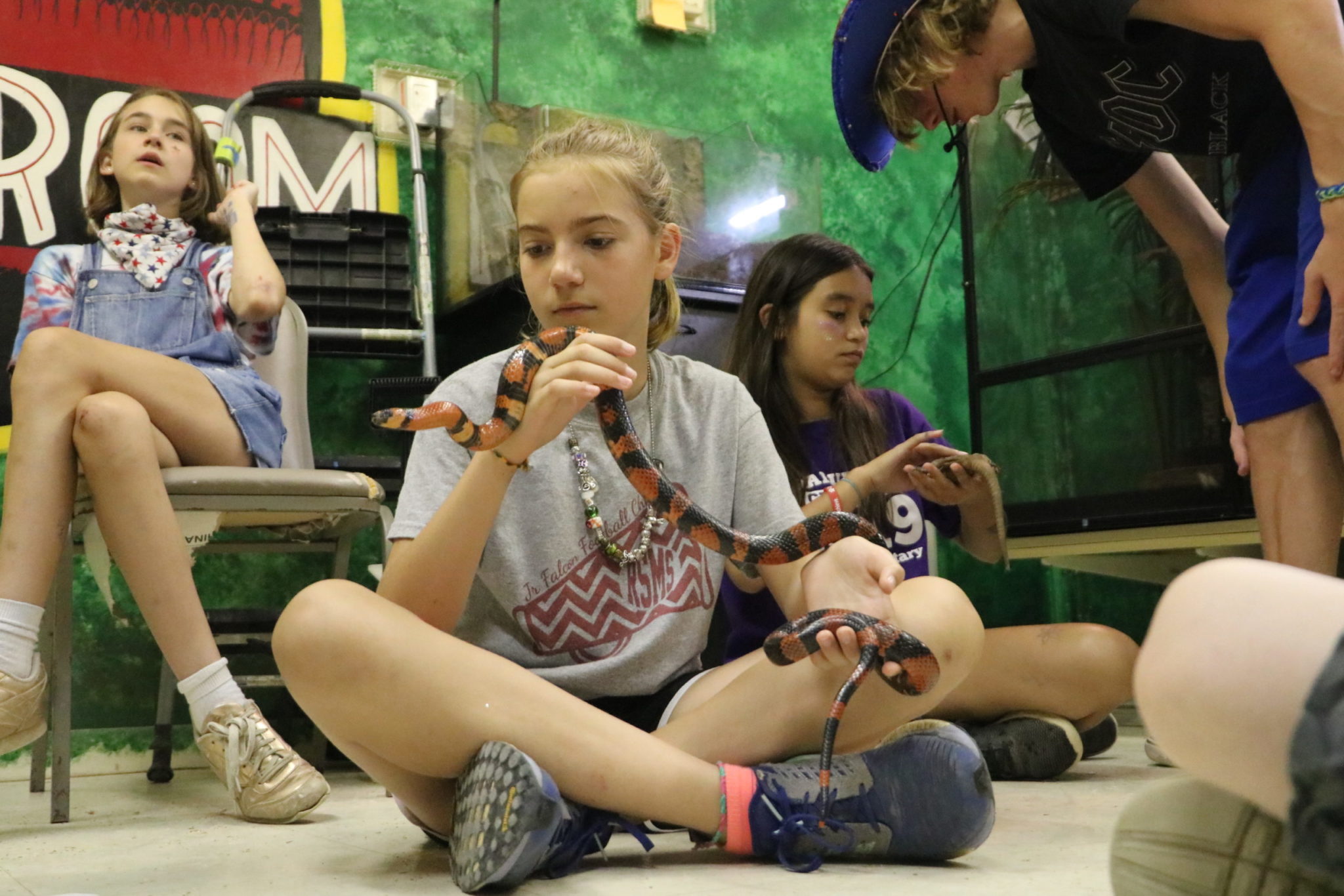Honduran Milk Snake
Lampropeltis triangulum hondurensis
Honduran milk snakes are one of 25 different subspecies of milk snakes. They are differentiated by their color patterns. They all have some form of red/orange, white/yellow, and black coloring. These bright colors (called aposematic coloring) are actually a false warning to make predators think that they are the venomous coral snake and eating them would be a mistake. These snakes love to hide among leaf litter. They won’t even come out to bask like many other snakes. Instead, they will lay under something else (like a log) that is getting direct sunlight and absorb the heat from that. During the winter they will brumate, which is similar to hibernation, but they wake to drink water.
The Honduran milk snake’s body is mainly red with white/yellow bands surrounded by two black bands. The way to tell the difference between a milk snake and a coral snake is a quick little rhyme: “If red touches yellow, you’re a dead fellow but if red touches black, you’re okay jack!” They are found on the forest floor or the grasslands of Honduras, Nicaragua, and northern Costa Rica. They can grow to be 4-6 ft long and weigh up to 3 lbs. Despite their small size (only about an inch in diameter) they are known to eat prey larger than them, like rats or other snakes.
Say Hello To Cub Creek's Snake: Bella
Bella is currently our only milk snake. She has alternating black and red bands all the way down her body. Her favorite activity is taking a bath in her water bowl! She is a very friendly snake and loves getting time out of her enclosure to be held.

Honduran Milk Snakes inhabit tropical areas of South America, including Hondura, Nicaragua, and parts of Costa Rica.
HABITAT -Their preference is low elevation rainforest leaf litter in Central America.
DIET -They eat small rodents, birds, lizards, and other snakes.
FUN FACT -Their colors (red, yellow, and black) mimic the venomous coral snake.
SOCIAL BEHAVIOR -While docile to humans, they are solitary and can be cannibalistic to other snakes.
ACTIVITY -They are diurnal in the spring and fall but nocturnal in the summer season.
PREDATORS -Predators include birds of prey, wild cats, and humans.
SIZE -They can reach 4-6 ft in length and weigh about 3 lb.
RELATIVES -The genus Lampropeltis includes kingsnakes, like the California or Speckled kingsnake.
CONSERVATION -Milk snakes are not listed under the IUCN.
Cub Creek Animal Care Information
Housing - Our snakes are housed in our Reptile room, which also features many of our lizards. They live in large heat and UV light-controlled enclosures. Fresh water and plenty of places to hide and explore are provided for them.
Diet - Once a week, our snakes are fed frozen mice that are tailored to the snake’s size. Snakes have very slow metabolisms, so they do not need to be fed often to receive all of their necessary nutrients.
Enrichment - Reptiles do not need a lot of enrichment beyond their various hides. Our campers give them plenty of stimulation by handling them and even occasionally bringing them outside on warmer days in the summer.


